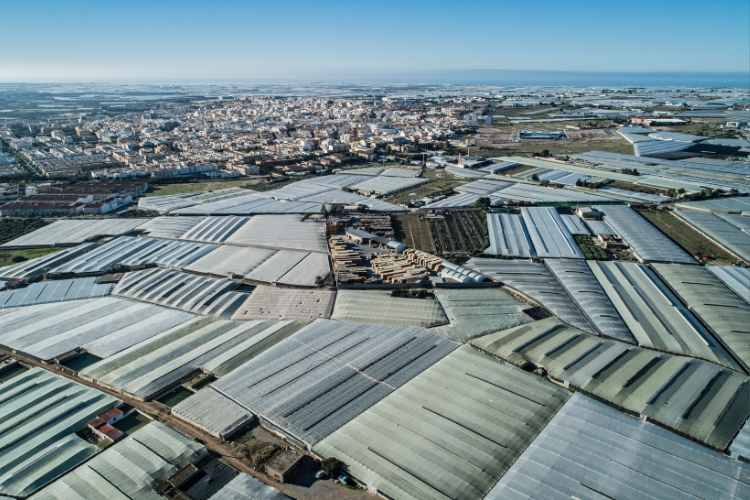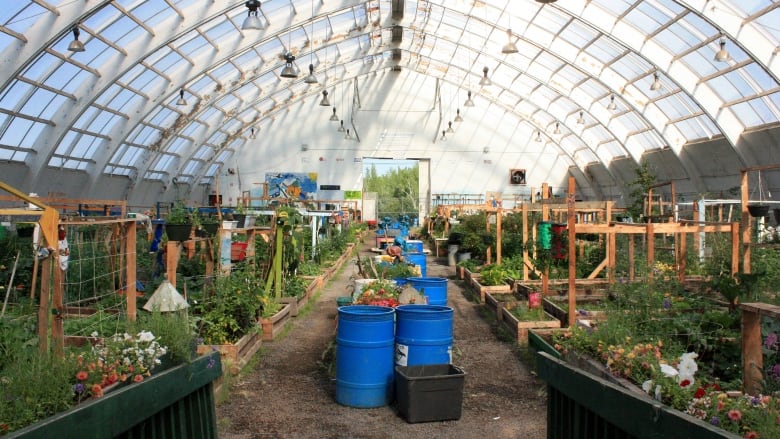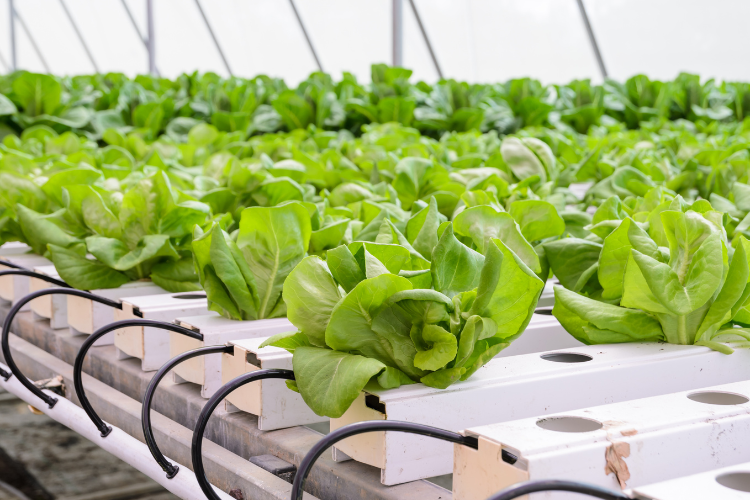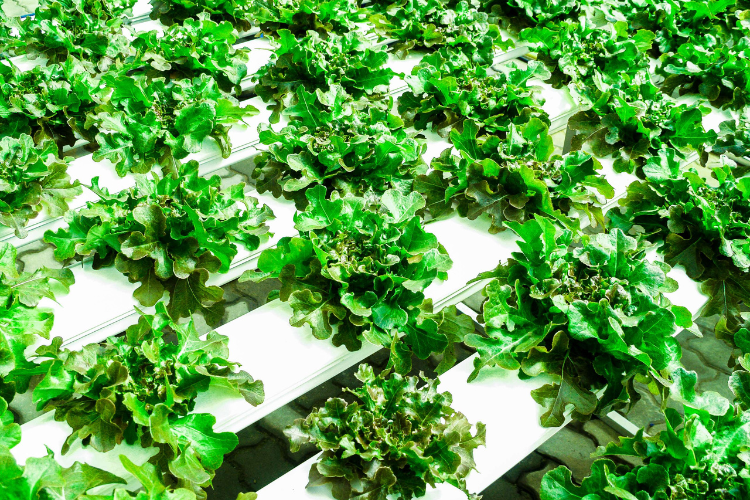
In an effort to combat food insecurity in northern communities, greenhouses are being utilized to bring fresh produce to those in need. These greenhouses serve as a source of education, community-building, and self-sufficiency, allowing community members to grow their own vegetables and learn about gardening. This approach is particularly important in remote and Indigenous communities, where access to affordable and fresh food is limited. With federal support and the involvement of organizations like Green Iglu, more and more greenhouse projects are popping up in these communities. However, the long-term success of these projects relies on community involvement and commitment. The goal is not to replace traditional food systems, but rather to supplement them and provide more options for healthy eating.
Introduction to the Greenhouse Project
The purpose of the greenhouse project
Welcome to the comprehensive article on the Greenhouse Project, aimed at addressing food insecurity in Indigenous, remote, and northern communities. In this article, we will explore the importance of greenhouses in mitigating food insecurity, highlight specific greenhouse projects such as the Inuvik Community Greenhouse and the Naurvik Project in Gjoa Haven, discuss the challenges and success factors of greenhouse projects, and examine the future of greenhouse projects in the North.
Background information on food insecurity in the North
Food insecurity has been a significant issue in the North, particularly in Indigenous, remote, and northern communities. The high cost of groceries, the impacts of colonization on northern Indigenous communities, and limited access to fresh fruits and vegetables are some of the factors contributing to this problem. Data from Statistics Canada shows that food insecurity rates in the North are significantly higher compared to the national average.
Overview of the current situation in Indigenous, remote, and northern communities
In Indigenous, remote, and northern communities, access to fresh and affordable food is limited. Much of the food flown in from outside the territory is processed and expensive. Furthermore, traditional activities like gathering and hunting, which once provided a significant source of sustenance, have been declining. Therefore, there is a pressing need to address food insecurity in these communities by providing alternative solutions for accessing fresh produce.
The Importance of Greenhouses in Addressing Food Insecurity
Benefits of using greenhouses to grow produce
Greenhouses provide several benefits in addressing food insecurity. They create a controlled environment for year-round growing, allowing communities to cultivate fresh fruits and vegetables even in harsh climates. Greenhouses also offer protection against pests and weather fluctuations, ensuring the success of crops. Additionally, greenhouses can be tailored to specific needs, enabling the production of a wide variety of produce.
Promoting self-sufficiency in remote communities
By growing their own produce in greenhouses, remote communities can reduce their reliance on food flown in from outside the territory. This promotes self-sufficiency and empowers communities to have greater control over their food sources. It also fosters a sense of pride and ownership among community members, knowing that they are cultivating their food locally.
Creating economic opportunities through greenhouse projects
Greenhouse projects can create economic opportunities in remote communities. By growing produce locally, communities can generate income by selling their surplus crops. This not only helps sustain the greenhouse project itself but also provides employment opportunities for community members. Additionally, the knowledge and skills gained through participating in greenhouse projects can be transferable and useful in other areas of agriculture or entrepreneurship.

The Inuvik Community Greenhouse
Description of the commercial greenhouse in Inuvik
The Inuvik Community Greenhouse, located in the Northwest Territories, is a commercial greenhouse situated in a former hockey arena. This unique setting allows community members to rent plots and grow their own vegetables and plants. The greenhouse provides the necessary infrastructure and resources for successful cultivation, including raised beds and ample sunlight.
Renting plots and community involvement
The Inuvik Community Greenhouse offers plots that community members can rent for their gardening needs. This approach promotes community involvement and encourages individuals to actively participate in the cultivation process. Renting plots ensures that everyone has access to the greenhouse and can contribute to the overall success of the project.
Focus on education and community-building
Aside from food production, the Inuvik Community Greenhouse also prioritizes education and community-building. The greenhouse serves as a space for learning about gardening techniques, sustainable agriculture practices, and the importance of food security. Through workshops, classes, and community events, the greenhouse fosters knowledge sharing and strengthens the bond among community members.
Food Security Issues in the North
High cost of groceries in the North
One of the significant challenges contributing to food insecurity in the North is the high cost of groceries. The remote location and limited transportation options make it more expensive to import food, leading to inflated prices. This economic barrier restricts access to fresh and nutritious food for many community members.
Impacts of colonization on northern Indigenous communities
Colonization has had long-term impacts on northern Indigenous communities, including food insecurity. Traditional food systems that once provided a reliable source of nutrition have been disrupted, leading to an increased reliance on store-bought food. The loss of traditional knowledge and practices further compounds the issue, as communities become disconnected from their traditional means of sustenance.
Limited access to fresh fruits and vegetables
Another key factor contributing to food insecurity in the North is limited access to fresh fruits and vegetables. The perishable nature of these food items, coupled with logistical challenges, makes it difficult to maintain a consistent supply in remote communities. This limited access to fresh produce negatively impacts the overall health and well-being of community members.

The Role of Greenhouses in Mitigating Food Insecurity
Increasing availability of fresh produce in remote communities
Greenhouses play a crucial role in increasing the availability of fresh produce in remote communities. By providing a controlled environment for cultivation, greenhouses enable communities to grow a wide range of fruits and vegetables throughout the year. This local production reduces the dependency on external food sources and ensures a more consistent supply of nutritious food.
Offsetting the high cost of food
Greenhouses can help offset the high cost of food in the North by providing a cost-effective means of producing fresh produce. By eliminating transportation costs and reducing reliance on imported goods, greenhouses offer a more affordable alternative for accessing nutritious food. As a result, community members can enjoy a wider variety of fresh fruits and vegetables without incurring exorbitant expenses.
Reducing reliance on food flown in from outside the territory
One of the aims of greenhouse projects is to reduce the reliance on food flown in from outside the territory. By cultivating their food locally, communities can decrease their dependence on imported goods, which are often processed and expensive. Greenhouses provide an opportunity for communities to regain control over their food sources and promote sustainable food systems.
Government Support for Greenhouse Projects
Overview of federal programs for agriculture and climate adaptation
The Canadian federal government offers various programs to support agriculture and climate adaptation initiatives, including greenhouse projects. These programs provide financial assistance, technical expertise, and resources to help communities establish and sustain their greenhouse projects. The government recognizes the importance of these projects in addressing food insecurity in Indigenous, remote, and northern communities.
Announcement of $19.5 million funding for new projects
In December 2022, the federal government announced $19.5 million in funding for up to 79 new projects across the country related to food security in Indigenous, remote, and Northern communities. This funding, part of the fourth phase of the Local Food Infrastructure Fund, aims to support initiatives that enhance food security and promote sustainable agriculture in these communities.
Previous support for greenhouses in remote and northern communities
The federal government has been providing support for greenhouses in remote and northern communities for several years. Since 2019, approximately 900 projects have received funding through various government programs. This support has enabled communities to establish and sustain their greenhouse projects, contributing to the overall goal of addressing food insecurity.

Challenges and Success Factors of Greenhouse Projects
Importance of community involvement and partnership
One of the significant success factors of greenhouse projects is strong community involvement and partnership. For these projects to thrive, it is crucial to work closely with community members and organizations to ensure that the project aligns with their needs and goals. Engaging community members in the planning, implementation, and maintenance of greenhouses fosters a sense of ownership and long-term commitment.
Sustainability of greenhouse projects in the long term
The sustainability of greenhouse projects in the long term is a key challenge. It requires ongoing maintenance, skilled individuals to oversee operations, and consistent community engagement. Ensuring the project’s longevity involves developing strategies for financial sustainability, knowledge transfer to the next generation, and fostering a culture of continuity within the community.
Need for community champions and skilled individuals
The success of greenhouse projects heavily relies on community champions and skilled individuals who are passionate about sustainable agriculture. These individuals play a crucial role in driving the project forward, providing leadership, and implementing best practices. They serve as mentors and educators, inspiring others to get involved and contributing to the overall success and sustainability of the project.
The Naurvik Project in Gjoa Haven
Description of the hydroponic food system in Gjoa Haven
The Naurvik Project in Gjoa Haven, Nunavut, is a community-led hydroponic food system that began in 2019. It utilizes three retrofitted shipping containers and primarily relies on wind and solar power. This innovative system allows for the cultivation of fresh produce in a community where growing vegetables is challenging due to harsh conditions and limited access to fresh produce.
Partnerships and community involvement
The Naurvik Project’s success is attributed to the partnerships formed with various organizations, including Agriculture and Agri-Food Canada, National Research Council Canada, and the Canadian Space Agency. These collaborations bring together expertise and resources to support the development and implementation of the hydroponic food system. Additionally, community involvement is crucial in ensuring the project meets the needs and preferences of local residents.
Replicating the system in other communities
One of the goals of the Naurvik Project is to replicate the hydroponic food system in other communities, thereby increasing access to fresh produce. By sharing their knowledge and experience, Gjoa Haven can serve as a model for other communities interested in implementing similar projects. This replication has the potential to greatly impact food security in the North by expanding the availability of locally grown, nutritious food.

Hydroponics as a High-Tech Growing Method
Benefits and drawbacks of hydroponics
Hydroponics is a high-tech growing method that does not use soil. Instead, plants are grown in a nutrient-rich water solution, allowing for precise control over their growth. This method offers several advantages, including faster growth rates, increased yields, and reduced water usage compared to traditional soil-based agriculture. However, hydroponics requires additional infrastructure, specialized equipment, and a higher level of technical knowledge.
Focus on heartier vegetables for long-term storage
In the context of food security, it is important to consider the types of vegetables that can be grown through hydroponics. In order to address long-term storage and preservation needs, a focus on heartier vegetables that are suitable for stews and other traditional dishes is necessary. This ensures that the greenhouse project can contribute to the overall food security of the community by providing sustenance throughout the year.
Considering the needs and preferences of the community
When implementing hydroponic systems, it is crucial to consider the specific needs and preferences of the community. This includes selecting vegetables that are culturally significant, align with local cuisine, and meet the nutritional requirements of community members. By tailoring the hydroponic system to the community’s needs, the greenhouse project can have a more meaningful and sustainable impact on food security.
The Future of Greenhouse Projects in the North
Continued importance of traditional food systems
While greenhouse projects offer significant benefits in addressing food insecurity, it is essential to recognize and preserve the importance of traditional food systems. Traditional activities such as hunting, fishing, and gathering have deep cultural and nutritional significance for Indigenous communities. Balancing greenhouse agriculture with traditional practices ensures that the benefits of fresh produce are integrated into existing food systems rather than replacing them.
Balancing greenhouse agriculture with traditional practices
Greenhouse agriculture should be viewed as a complement to traditional practices rather than a complete replacement. By incorporating greenhouse-grown produce into traditional meals, communities can enjoy the nutritional benefits of fresh fruits and vegetables while also maintaining a connection to their cultural heritage. This approach fosters a holistic and sustainable approach to food security in the North.
Expanding greenhouse projects to more communities
The success of greenhouse projects in addressing food insecurity highlights the potential for expansion to more communities in need. With significant government support and the increasing availability of programs and funding, it is now more feasible than ever to establish greenhouse projects in Indigenous, remote, and northern communities. By replicating successful models, fostering community involvement, and promoting knowledge sharing, greenhouse projects can have a transformative impact on food security in the North.
In conclusion, greenhouse projects play a crucial role in addressing food insecurity in Indigenous, remote, and northern communities. By providing access to fresh produce, promoting self-sufficiency, creating economic opportunities, and mitigating the impacts of colonization, greenhouses offer a practical solution to a pressing issue. With government support, community involvement, and a commitment to sustainability, greenhouse projects have the potential to bring about meaningful change and ensure a healthy, secure future for these communities.


